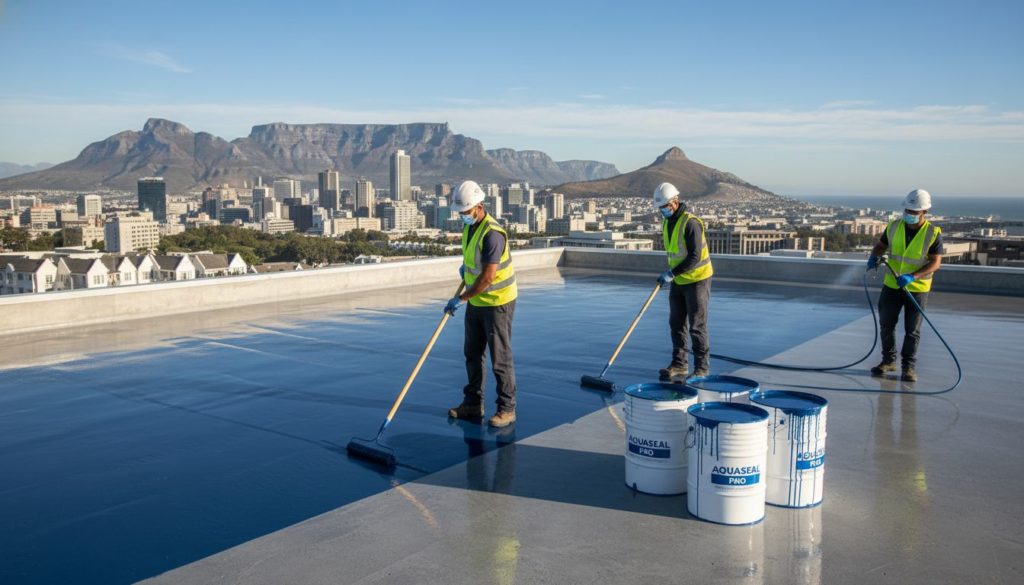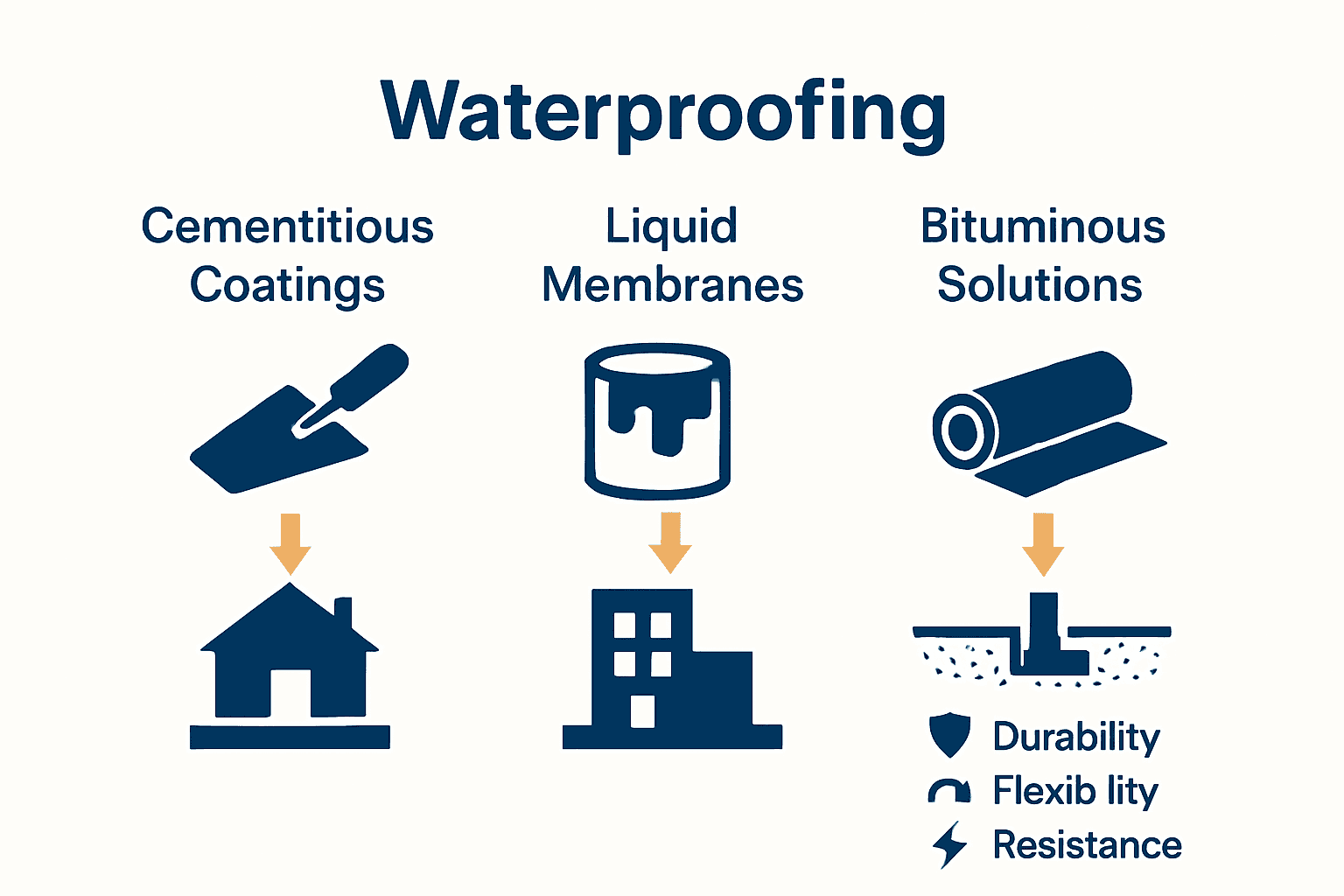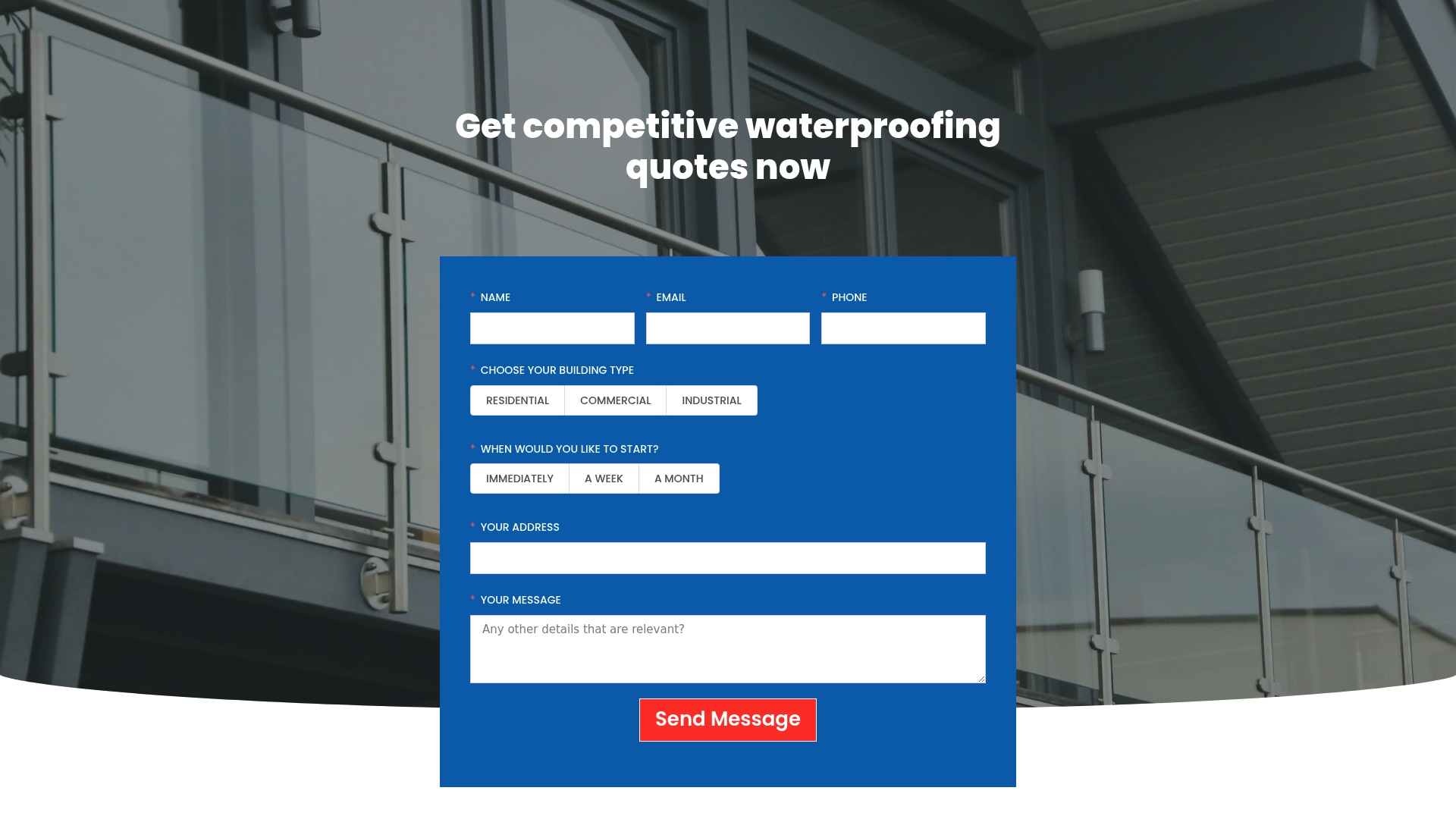Water damage remains one of the most costly threats to homes and commercial buildings, with studies showing that over 85 percent of construction defects are caused by moisture intrusion. Without proper waterproofing, structures face risks like mould growth, concrete erosion, and weakened foundations. Understanding how different waterproofing materials work and choosing the right solution can be the key to protecting your investment and avoiding expensive repairs down the line.
Table of Contents
- Defining Waterproofing Materials And Core Concepts
- Common Types Of Waterproofing Materials Explained
- How Waterproofing Materials Function And Perform
- Choosing The Right Material For Your Property
- Risks, Costs, And Mistakes To Avoid
Key Takeaways
| Point | Details |
|---|---|
| Importance of Waterproofing Materials | Specialized materials prevent water infiltration and protect structures from moisture damage in various applications. |
| Types of Waterproofing Systems | Common categories include cementitious coatings, liquid membranes, and bituminous systems, each addressing unique moisture challenges. |
| Factors for Material Selection | Choose waterproofing materials based on surface type, moisture exposure, climate conditions, and structural movement potential. |
| Risks of Waterproofing Failures | Inadequate preparation and improper application can lead to costly structural damage; professional assessment is crucial for effective waterproofing. |
Defining Waterproofing Materials and Core Concepts
Waterproofing materials are specialised substances designed to prevent water penetration and protect structures from moisture damage. According to Wikipedia, these materials can be inherently water-resistant or treated to achieve water repellent properties through various coatings like wax, rubber, or polyurethane.
At its core, waterproofing involves creating a protective barrier that prevents water from infiltrating surfaces or structures. Wikipedia highlights hydrophobic concrete as an excellent example, where materials are specifically engineered to repel water and enhance structural durability. These materials typically work through multiple mechanisms:
- Blocking water absorption
- Reducing surface tension
- Creating molecular barriers
- Preventing liquid penetration
In the context of South African construction, waterproofing materials serve critical functions across residential, commercial, and industrial properties. They protect against potential water damage, structural degradation, and moisture-related issues such as mould growth, concrete erosion, and foundation weakening. Understanding the Role of Membranes in Waterproofing provides deeper insights into how these advanced materials function in real-world applications.
The selection of appropriate waterproofing materials depends on multiple factors including surface type, environmental conditions, anticipated moisture exposure, and specific project requirements. Professional assessment becomes crucial in determining the most effective waterproofing strategy for any given structure.
Common Types of Waterproofing Materials Explained
Waterproofing materials are diverse and tailored to meet specific structural protection needs. Sephaku Cement highlights several critical types of waterproofing systems that property owners and contractors should understand, each designed to address unique moisture challenges.
Cementitious coatings represent one of the most fundamental waterproofing approaches. These rigid materials are typically used in internal wet areas like bathrooms, basements, and water tanks. Their primary advantage lies in their ability to create a strong, impermeable barrier directly integrated with concrete surfaces.

- Excellent adhesion to concrete
- High durability
- Resistance to hydrostatic pressure
- Cost-effective implementation
Liquid waterproofing membranes offer greater flexibility compared to traditional cementitious systems. These materials can be applied as a seamless coating, conforming to complex surface geometries and providing enhanced protection against water infiltration. 7 Essential Types of Waterproofing Membranes provides deeper insights into the nuanced applications of these advanced materials.
Another critical category is bituminous waterproofing, which includes both liquid coatings and pre-formed membranes. Ideal for underground structures and foundations, these materials leverage bitumen’s natural water-resistant properties. They excel in scenarios requiring robust protection against persistent moisture, such as basement walls, retaining structures, and underground parking facilities. Professional selection and application remain crucial to ensuring long-term structural integrity and effective water management.
How Waterproofing Materials Function and Perform
Waterproofing materials operate through complex molecular mechanisms designed to repel and block water penetration across various surfaces and structural environments. The fundamental principle involves creating an impenetrable barrier that prevents moisture from infiltrating critical building components.
At a microscopic level, these materials function through several key strategies:
- Hydrophobic treatment: Modifying surface molecules to repel water
- Pore blocking: Filling microscopic surface gaps
- Chemical bonding: Creating water-resistant molecular structures
- Elastic membrane formation: Developing flexible protective layers
Different waterproofing materials employ unique performance characteristics depending on their composition.
Cementitious systems, for instance, create rigid barriers with exceptional compressive strength, while polyurethane membranes offer exceptional flexibility and adaptability to surface movements. Understanding Waterproofing Methods Explained Simply provides comprehensive insights into these intricate functioning mechanisms.
The performance of waterproofing materials is critically evaluated through factors like water resistance, durability, UV stability, temperature tolerance, and application versatility. Professional selection involves comprehensive assessment of environmental conditions, anticipated moisture exposure, and specific structural requirements to ensure optimal protection against potential water damage.
Choosing the Right Material for Your Property
Selecting the appropriate waterproofing material requires careful consideration of multiple critical factors that impact long-term structural protection. AfriSam emphasises the importance of understanding specific environmental conditions and application requirements when choosing waterproofing solutions.
Key considerations for material selection include:
- Surface type and substrate composition
- Expected moisture exposure levels
- Temperature and climate variations
- Structural movement potential
- Budget constraints
- Long-term durability requirements
Professional recommendations typically involve comprehensive evaluation of material performance characteristics. TPO membranes and polyurethane waterproofing, for instance, offer distinct advantages in different scenarios. 7 Common Waterproofing Materials Every Property Owner Should Know provides deeper insights into material-specific benefits and potential applications.
Ultimately, successful waterproofing depends on matching the material’s inherent properties with the specific environmental challenges of your property. Factors like UV exposure, potential structural movement, chemical resistance, and application complexity must be meticulously evaluated to ensure optimal protection against moisture intrusion and potential structural damage.
Risks, Costs, and Mistakes to Avoid
Waterproofing failures can lead to catastrophic and expensive structural damage, making proactive risk management crucial for property owners. Understanding potential pitfalls helps prevent costly mistakes that could compromise your building’s integrity and long-term value.
Common risks and mistakes in waterproofing include:
- Inadequate surface preparation
- Selecting incorrect materials for specific conditions
- Improper application techniques
- Ignoring minor moisture issues
- DIY approaches without professional expertise
- Neglecting regular maintenance and inspections
Cost considerations extend far beyond initial material expenses. 8 Best Waterproofing Practices You Need to Know highlights that ineffective waterproofing can result in exponentially higher repair costs compared to professional installation. Potential financial risks include structural repairs, mould remediation, property value depreciation, and potential health hazards.
Professional assessment becomes critical in mitigating these risks. Experienced waterproofing contractors can identify subtle environmental factors, recommend appropriate materials, and ensure precise application techniques that prevent future water-related complications. Investing in quality waterproofing upfront can save substantial expenses and protect your property’s structural integrity over its entire lifecycle.
Protect Your Property with Expert Waterproofing Solutions
Understanding the critical role of waterproofing materials can save you from costly and frustrating structural damage. Whether your property faces moisture infiltration, foundation weakening, or mould growth, choosing the right waterproofing solution is essential. This guide highlighted key challenges such as selecting durable materials that withstand South Africa’s unique environmental conditions and ensuring professional application to avoid common mistakes.
Explore our full range of expert advice and services in the Uncategorized – Pro Waterproofing section where we simplify complex waterproofing topics to help property owners make confident decisions.
Don’t let water damage undermine your investment. Act now by visiting Pro Waterproofing to request a tailored assessment from trusted specialists who understand your local needs. Secure your property’s future with proven waterproofing expertise designed for lasting protection.
Frequently Asked Questions
What are waterproofing materials and how do they work?
Waterproofing materials are specialized substances designed to prevent water penetration and protect structures from moisture damage. They function by creating a protective barrier, using mechanisms like blocking water absorption and reducing surface tension.
What are the common types of waterproofing materials used in construction?
Common types of waterproofing materials include cementitious coatings, liquid waterproofing membranes, and bituminous waterproofing. Each is suited to specific conditions and applications, such as internal wet areas or underground structures.
How do I choose the right waterproofing material for my project?
Selecting the right waterproofing material involves assessing factors such as surface type, expected moisture exposure, temperature variations, and structural movement potential. Professional evaluation is recommended for optimal material selection.
What are the risks of improper waterproofing application?
Improper waterproofing can lead to severe structural damage and lead to costly repairs. Common mistakes include inadequate surface preparation, selecting incorrect materials, and neglecting regular maintenance, potentially resulting in water damage and mold growth.



